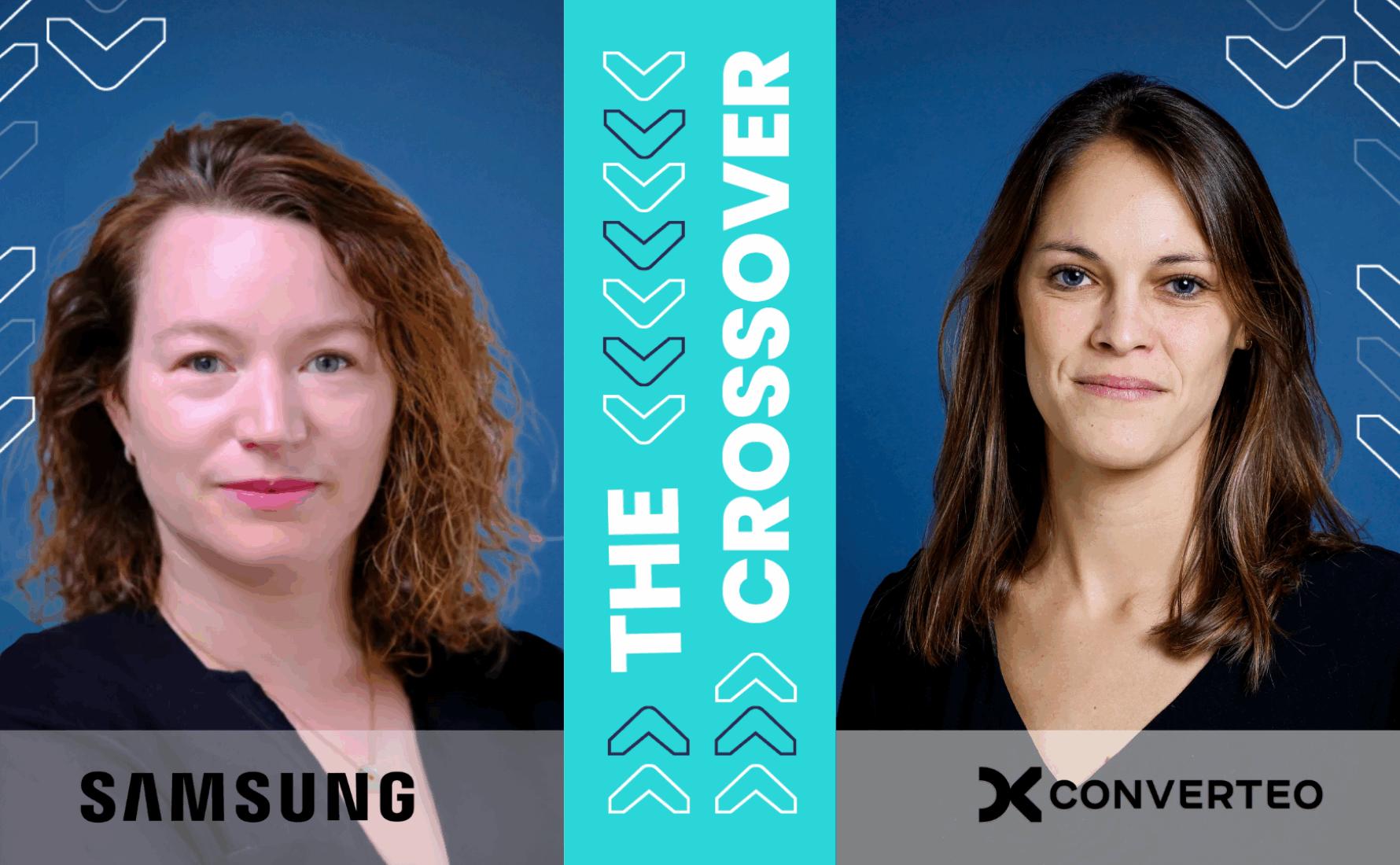Implementing a Referral Program: Lessons Learned from Samsung

At the beginning of 2024, Samsung France tested the implementation of a referral program for members of its loyalty program. With multiple products and categories, it is now moving out of the testing phase to be deployed more widely. In this Cross Perspectives discussion, Marie Galiana, Head of CRM & Loyalty at Samsung France, and Maëva Le Menn, Senior CRM Consultant at Converteo, reflect on this project and its insights.
Why did you decide to implement a referral program?
Marie Galiana, Samsung: The question of referrals was part of the redesign of the “Samsung Members” loyalty program, which aimed to put the customer at the center. We first worked on all the promises of the program, the onboarding journey, and the activation mechanics. Once the CRM ecosystem was well established, with the right relational emails and transactional triggers, it was possible to move to the next step. Implementing a referral program was a logical progression in terms of growth levers.
Maëva Le Menn, Converteo: In 2024, Samsung is the second most preferred brand among the French people; it was essential to capitalize on this ranking and on customer attachment to the brand. Samsung had previously deployed referral programs, but always sporadically, for specific products—like The Frame TVs, the Galaxy Z Flip smartphone, etc.—and for very limited durations. This time, the brand wanted to move away from that logic and create a year-round referral program for all product categories.
What mechanism did Samsung choose for its new referral program?
Marie Galiana: Since our culture at Samsung is based on test and learn, before deploying a complete program, we started by conducting a test on an initial cohort, which was engaged for three months with emails, push notifications, and a sponsored post on social media. Each time, the results allowed us to refine subsequent communications to optimize them.
Maëva Le Menn: We initially targeted customers who had purchased Samsung products in the last three months—a period that included the launch of a flagship product, the Galaxy S24—with a straightforward tiered offer: €10 off for every €100 spent on Samsung.com, up to a maximum basket of €3,000. The referrer could also benefit from this offer.
Were there any particular difficulties to overcome in the deployment of the referral program?
Maëva Le Menn: The first issue was technical: we needed to be able to track conversions easily to identify who had referred whom and link referrers with their referrals. This involved a significant project to reconcile the data automatically.
Marie Galiana: There was also an internal challenge of negotiating the offers with the e-commerce teams to find the most suitable level of promotion and the simplest mechanism for customers. Additionally, we had to convince the product teams of the relevance of adopting a multi-product and multi-category strategy. We aimed to break down the siloed approach to embrace a “One Samsung” vision. Effective communication with the teams throughout the test period was crucial to achieving this.
What are the next steps?
Marie Galiana: The initial results are more than encouraging and motivate us to continue and expand the program further. The referral program has become a beneficial growth lever for the e-commerce site and for acquiring new Samsung customers. We see that cross-product interactions between divisions are developing well, which aligns with our strategic objectives. We will now leverage the results from this first cohort to develop automation for targeting and messaging.
Maëva Le Menn: All members of the loyalty program could access referral codes in their customer accounts, but in reality, not everyone refers. Moving forward, we need to make choices by analyzing the cohorts to identify those who are referring and focus our efforts on them with more refined targeting. It will also be interesting to analyze the long-term effects of the referral program: its impact on the perceived value of the program, customer loyalty, consideration, and so on.
To conclude, what is THE advice you would give for implementing an effective referral program?
Maëva Le Menn: It’s better if the implementation of a referral system occurs when the brand has reached a good level of CRM and data maturity: for it to work and be continuously refined through in-depth analyses, it’s essential to have the right foundations in place.
Marie Galiana: You also need to ensure that the offer is significant and make it as simple as possible. In our case, it’s the same offer for both the referrer and the referred. Referral programs are a way to recognize customers, in addition to being a promotional lever: the ability to offer a promotion to loved ones is empowering.

